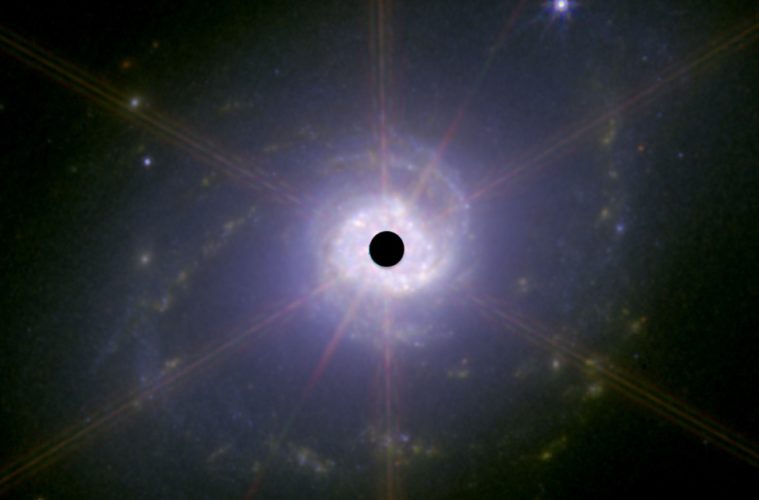Astronomers within the Department of Physics and Astronomy at UC Irvine are conducting the most detailed observations of the universe ever. The department recently became one of 13 astronomy programs selected by NASA to begin research on the first-ever images sent back from the James Webb Space Telescope.
Launched by NASA in December 2021, the James Webb Space Telescope returned the first images back to earth on July 12. Due to the amount of detail, the images drew awe-inspiring reactions from the astronomical research community.
Unlike its predecessor the Hubble Telescope, JWST captures images within the infrared spectrum, giving astronomers the most detailed views of surrounding galaxies ever captured. Hubble was only able to capture images in the visible light spectrum, prohibiting astronomers a chance to peer behind the galactic dust to surrounding galaxies.
Dr. Vivian U is an observational extragalactic astronomer who works as an assistant researcher in UC Irvine’s Astronomy Department. U explained that this galactic dust has plagued researchers for decades but with the emergence of infrared imaging telescopes, a clearer picture of space and its chemical elements is emerging.
“My group here at UC Irvine observes how galaxies in supermassive blackholes interact with each other. In particular, my interest is in merging galaxies – these galaxies that are interacting and colliding with each other. This is kind of a phase in galaxy evolution, not all galaxies go through it but when it does, it does introduce dramatic changes to a galaxy’s life span — altering the phase of its evolution,” U explained. “During this phase we know that a lot of the dust gets filtered into the center of the system and blocks our view of the center of the system.”
U is the lead author for one of the 13 early-release science teams — composed of researchers from UC Irvine, CalTech and the National Radio Astronomy Observatory in Virginia — that is getting early data from the $10 billion telescope.
U explained how UC Irvine became involved with this state-of-the-art research, adding that the role of these early-release science teams is not only to analyze the findings, but also to help NASA explore the capabilities of the JWTS.
“Because this is a brand new instrument, NASA was hoping that teams of astronomers would basically step up to help calibrate the new instruments and demonstrate the wide range of instruments on board the JWST,” she explained.
To be a part of NASA’s Early Release Science Program, U and her team had to submit a proposal to compete to be one of the first teams to use the data. “But also its first guinea pig,” she added.
Specifically, U and her team researched nearby galaxy NGC 7469 using JWST’s infrared technology. In a paper published in the The Astrophysical Journal Letters, U wrote that her team of researchers have viewed the interactions between the nucleus of a galaxy and a supermassive black hole — “face-on.”
The images provided to U and her colleagues are so detailed, the team was able to see wind being generated from the supermassive blackhole inside the galaxy.
“[The galaxy NGC 7469] is just the first of three targets that were observed as part of our larger program. We are basically looking at a blackhole that is rapidly growing — but at the same time it is spewing out energy that is affecting the vicinity gas that’s around it,” U explained. “We’re seeing this blackhole that’s driving out wind, and how that wind is depositing energy into the surrounding gasses and influencing how stars may be forming in this blackhole region.”
U explained that NGC 7469 is more than a million light years away, but is considered one of the closer galaxies. However, regardless of NGC 7469’s distance, the view was unprecedented for the research group.
“Viewing this galaxy face-on, we are able to see not only winds from the supermassive black hole blowing in our direction but also ‘shock heating’ of the gas induced by said winds very close to the central active galactic nucleus, which is something we had not expected to be able to discern so clearly.”
As U and her team of researchers begin to digest this data, it’s also important to explain the meaning of these recent discoveries.
“We are all working on understanding our galaxy’s fate. As a human civilization, we want to understand where we are — why we’re here in this point and time in the universe. So, a lot of that is trying to understand this history of the universe — how galaxies came about, how we had the Big Bang, and how we’ve evolved since the beginning of time to where we are today. Perhaps, more importantly, where we are going from here on,” she explained.
As the team of researchers at UC Irvine continues on their journey with JWST, U said she is confident there are still vast unknowns.
“What I think interests all of us — what are we going to see that we didn’t expect? We don’t know. We have assumptions of how the world works — theorists are able to come up with models that best work with what we have seen previously,” she said. “We have seen evidence of galaxy merging. We know that if each galaxy is believed to have its own black hole, then the merging of those galaxies should produce a larger galaxy and a larger black hole, but we haven’t actually been able to witness the merging of this event. From what we know now, there’s just not as many of these merging events as we predicted — why is that?”
She continued, “I would say there’s still a lot of known unknowns — but who am I to say?”
Advertising disclosure: We may receive compensation for some of the links in our stories. Thank you for supporting Irvine Weekly and our advertisers.

